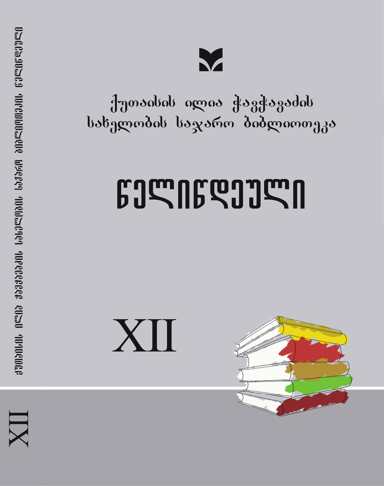Viticulture and Horticulture Vocabulary in Zemo Acharian
DOI:
https://doi.org/10.48614/yk.12.2020.98-107Keywords:
Georgian Literary Language, Acharian Dialect, Zemo Acharian, Viticulture, Horticulture, Vocabulary, Word ProductionAbstract
The labor activities, education, culture, lifestyle, and manners of the inhabitants of different parts of Georgia are reflected in the specialized vocabulary. The representative of one part studies the common and different nature, manners, and level of culture of the inhabitants of the other part. Specialized vocabulary enriches the literary language with pearls scattered among the people. Vine, vineyard, wine has always been the main administering of the Georgian people’s economy and the characteristic of its identity. All this determines the topicality and importance of the issue to be studied. Familiarity with the ethnographic life and work-activity of the inhabitants of Zemo Achara gives us interesting material for studying the vocabulary of viticulture and horticulture. From an economic point of view, the Upper Acharistskali gorge has historically been one of the most advanced parts. One of the important sources for studying the agricultural past of this part is the toponyms related to viticulture: Venakhi, Venakhebi, Navenakhevi, Karvenakhi, Tchurispirebi, Satchuria, Tchuris Sasveni.
Venakhi (the vineyard) is confirmed by two meanings in Zemo Acharian: 1. the place where the vine is grown; 2. to denote one root of a vine. The following grape varieties are known in Zemo Adjarian according to our materials: Shavshura – ghvanura, Javakhetura, Korkaula. The geographical origin of the name of these grape varieties is indicated by the origin expression suffixes -ur-a // - ul-a. This suffix is also found in apple varieties: Tavsharula, Jabniura, Kedura, Tchvanura, Kekhura... Depending on the grain structure, grapes can be Gvalkakla (round-grained); Tsvitkakla (fine-grained), Chitvila (fine-grained grapes, resembling a bird’s eye), Butko // Butkura (pump-grained). Batmana, Baraka indicates large... The color is indicated by Kurshuma (black grapes), Lavlava (red grapes), Varvara (black plum), Kurkumela (very black). The sweet taste of the pear is called: Tapla (like sweet honey), Shakara (sweet like sugar)... Immature fruits are marked by mchakhe, mkvakhe, gokhi // gorkhlo, kepratchi.
In Zemo Acharian, all the means for the derivation are confirmed, which are found in the Georgian literary language and other dialects of the Georgian language, the principle of lexical designation gives us a difference: color, taste, origin, prevalence.
It is quite common to produce names with prefix-suffixes ( sa-o, na-ev, naar, na-ur) and suffixes (-ur-ა //-ul-a -a) Composite decoration of names occupies an important place. Determinant-determined forms occupy leading place (p’antavashla, gverdts’itela, mskhalbat’ona, ghork’liava, ts’yalqliava, ghort’q’emala, chit’ambala, t’q’isq’urdzena, t’evandidi).




